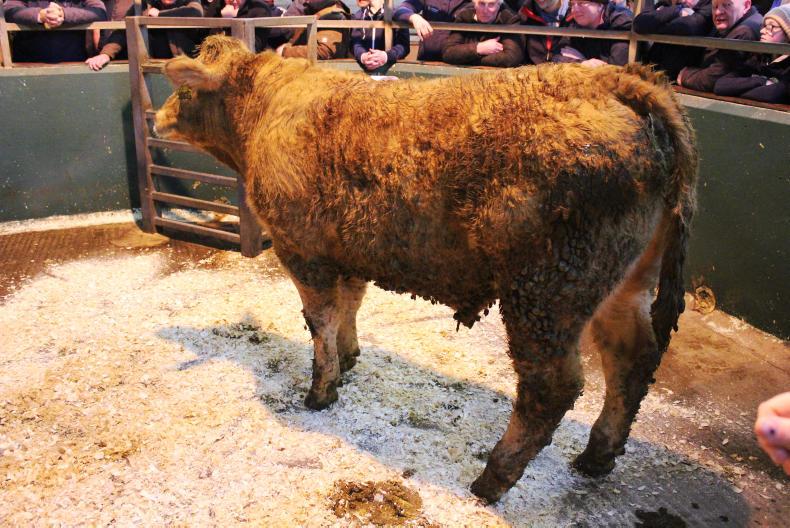Increased demand for finished cattle in the Republic of Ireland has seen top-end beef prices at Irish plants creeping ahead of those being paid north of the border in recent weeks.
Plants in the Republic of Ireland quote on an R3 animal, unlike NI plants which quote on a U3.
In the Republic, the price differential between a U3 and R3 steer is 18c/kg.
Animals that meet market spec in terms of age, grade and carcase weight also receive a 12c/kg premium for quality assurance.
With plants in the Republic of Ireland paying from a base of 405c to 415c/kg on R grade animals this week, a U grade animal is worth 435c to 445c/kg at the upper end of the market.
After deducting the 5.4% VAT rate which applies to Irish cattle prices, the Irish beef price converts to a sterling equivalent of 364p to 371p/kg.
In NI, plants are working from base quotes of 350p/kg to 356p/kg with deals of 360p to 365p/kg for regular finishers.
However, processors operating on both sides of the border have trimmed quotes this week, which are down by 5c/kg in the south and 2p to 4p/kg at NI plants.
NI kill
Meanwhile, slaughter figures for 2017 show that the cattle kill in NI reached its highest level in five years.
A total of 446,356 animals were slaughtered across all classes of animals, to include 332,717 prime cattle, an increase of over 15,000 on 2016 levels and the highest kill figure for prime cattle since 2013.
The prime kill breaks down to 170,482 steers, 126,135 heifers and 36,100 bulls. The average carcase weight was 348kg for steers, 314kg for heifers and 330kg for young bulls.
Cows
The cow kill was also strong, with 103,441 slaughtered in 2017, up by 4,000 head on the previous year and 16,000 on 2015.
The cow kill is now at its highest level since pre-BSE. Average carcase weight for cows killed in 2017 was 297kg.
Sheep
While cattle numbers rise, slaughter figures for sheep at NI plants have moved in the opposite direction. The sheep kill totalled 451,350 during 2017, and although it is only marginally down on 2016 (by 1,700 head), it is down by more than 50,000 on 2015 levels.






 This is a subscriber-only article
This is a subscriber-only article










SHARING OPTIONS: